
Introduction to Anawangin Cove Zambales
Nestled within the tranquil shores of San Antonio, Anawangin Cove is one of the most breathtaking hidden gems in the province of Zambales. Famous for its crescent-shaped shoreline blanketed by fine volcanic ash, Anawangin captivates visitors with scenery that seems almost surreal. Despite often being referred to as Anawangin Island, the area is actually a secluded cove accessible primarily by boat or through a scenic hike across lush mountain trails. Its untouched beauty and serene ambiance have made it a favored destination among locals and tourists alike, particularly those looking to escape the hustle and bustle of urban life.
Tourists adore Anawangin Cove Zambales not just for its beauty, but for the unique opportunity to reconnect with nature. Unlike more commercial beaches, Anawangin remains largely undeveloped, preserving its pristine charm and offering visitors a sense of adventure. This simplicity has become its hallmark—travelers arrive knowing that relaxation here means trading luxury resorts for the simple pleasure of camping under the stars. The scent of fresh pine-like trees known as Agoho gently fills the air, making visitors momentarily forget they are on a tropical beach rather than in a temperate forest.
One of the distinctive features that sets Anawangin Beach apart is its remarkable landscape shaped by volcanic activity decades ago. The grayish-white sands, juxtaposed with the turquoise waters and lush greenery, create picturesque backdrops ideal for photography enthusiasts. Additionally, the cove’s strategic location serves as an excellent base for exploring nearby attractions, such as Nagsasa Cove, Capones Island, and the iconic lighthouse on Camara Island, providing ample opportunities for adventure through island hopping.
For travelers seeking both serenity and adventure, a visit to Anawangin Zambales promises an unforgettable experience, seamlessly blending relaxation with a healthy dose of outdoor excitement.
23 Must-Visit Tourist Spot in ZambalesThis post contains affiliate links. I may earn a small commission if you book through them, at no extra cost to you. Thank you for supporting LakbayPinas. Read our full Affiliate Disclosure.
Table of Contents
Location & How to Get to Anawangin Cove
Geographic Description and Location Information
Anawangin Cove is located in the charming coastal municipality of San Antonio, Zambales, approximately 185 kilometers northwest of Manila. Known for its pristine natural beauty and remote location, the cove is surrounded by majestic mountains, lush greenery, and sparkling blue waters of the West Philippine Sea. Despite often being mistakenly called Anawangin Island, it is actually a cove nestled between rugged hills and dense forests, creating a breathtakingly secluded paradise. The beach itself stretches gracefully, forming a picturesque crescent lined with soft volcanic ash, offering visitors an unforgettable visual experience.
Nearby Landmarks
The main entry point to Anawangin Cove Zambales is the coastal village of Barangay Pundaquit. This sleepy fishing village serves as the jump-off point for tourists planning to visit the nearby coves and islands. Notably, Pundaquit Beach itself has become a popular spot, offering resorts, local restaurants, and small stores providing basic amenities and supplies. Other notable landmarks nearby include the equally captivating Nagsasa Cove, Capones Island famous for its historic lighthouse, and Camara Island known for its scenic rock formations.
Step-by-Step Travel Guide: How to Go to Anawangin Cove
Reaching Anawangin Zambales from Manila involves multiple options, each varying in cost, duration, and convenience.
By Bus (Recommended for Budget Travelers)
Step 1: From Manila, travelers can board a bus bound for Iba or Sta. Cruz, Zambales, typically available from Victory Liner terminals in Pasay, Cubao, or Caloocan. Travel time takes approximately 4 hours, depending on traffic, and costs about PHP 300-400 per person.
Step 2: Alight at the town of San Antonio, Zambales. From there, travelers should take a short tricycle ride to Barangay Pundaquit, costing approximately PHP 30-50 per person or around PHP 100 per tricycle for private hire.
Step 3: Once at Pundaquit Beach, visitors must hire a boat for the 30 to 45-minute ride directly to Anawangin Beach. Boat rides typically range from PHP 1,000-1,500 roundtrip (good for 4-5 persons), and prices are negotiable depending on the group size.
By Private Car (Recommended for Convenience)
Travelers driving their own vehicles from Manila to Anawangin should head north via the North Luzon Expressway (NLEX) and Subic-Clark-Tarlac Expressway (SCTEX).
Exit SCTEX at Subic, then follow signs toward Olongapo City, and subsequently San Antonio, Zambales.
The trip typically takes 3 to 4 hours, depending on traffic conditions.
Secure parking areas are available at Pundaquit for a reasonable fee (around PHP 100-200 per day), after which a boat transfer to Anawangin Cove is necessary.
Hiking Option (Recommended for Adventurous Travelers)
For those looking for adventure, hiking to Anawangin Cove via the Anawangin Cove hiking trail is a viable, yet challenging, option.
The hike begins from Barangay Pundaquit and takes approximately 4 to 6 hours, offering breathtaking vistas and an intimate encounter with nature.
Transportation Tips and Recommendations
To ensure hassle-free travel to Anawangin Cove location, travelers should:
Depart Manila early morning to avoid traffic congestion and arrive with ample daylight.
Always confirm boat and tricycle rates beforehand to avoid surprises or misunderstandings.
For safety, always wear life jackets provided by boat operators.
Consider traveling in groups to share boat costs and to negotiate better deals with operators.
Check weather forecasts ahead of departure, as boat transfers may be suspended due to rough seas, especially during the rainy season.
By carefully planning your journey to Anawangin Cove Zambales, your trip can be stress-free, allowing you more time to immerse yourself in this enchanting destination.

Best Time to Visit Anawangin Cove
Climate Overview for Anawangin Zambales
Anawangin Cove, situated on the western coast of Zambales, experiences a tropical climate typical of the Philippines, characterized by distinct wet and dry seasons. While the weather in Anawangin Zambales is generally warm year-round, understanding seasonal variations is essential to ensure an enjoyable visit.
Month-by-Month Breakdown of Weather Conditions
January – February: Pleasant weather with cooler evenings and minimal rain, ideal for camping and outdoor activities.
March – May: Hot and dry, marking the height of summer with clear skies perfect for beach trips and island hopping around Anawangin Island.
June – September: Rainy season, with occasional typhoons causing rough seas, affecting boat transfers and accessibility. Visitors should check forecasts diligently.
October – December: Transitional period with occasional showers in October, shifting to cooler, more favorable conditions by November, leading to clear skies by December.
Recommendation for the Best Time to Visit Anawangin Cove
For travelers planning to experience the full charm of Anawangin Cove, the ideal months to visit are from late November through early May. Specifically, the months of December to February offer a pleasant climate, combining clear, sunny days with comfortably cool evenings. Those preferring hotter weather and more vibrant activities may opt to visit between March and May, perfect for enjoying Anawangin Beach and exploring nearby coves and islands without weather interruptions.
Peak vs. Off-Peak Seasons: Advantages and Disadvantages
Peak Season (March to May):
Advantages: Ideal weather conditions, lively atmosphere, optimal for water activities and camping.
Disadvantages: Larger crowds, higher prices for boat rides, accommodations, and rentals; booking in advance is highly recommended.
Off-Peak Season (June to October):
Advantages: Fewer visitors, lower costs, peaceful atmosphere, ideal for travelers seeking solitude.
Disadvantages: Potential adverse weather, interrupted travel plans due to typhoons, limited activities available.
To fully enjoy visiting Anawangin Cove Zambales, visitors should carefully balance their preferred activities and expectations with seasonal weather considerations. Planning accordingly will make the difference between an unforgettable adventure and an inconvenient weather-related mishap.
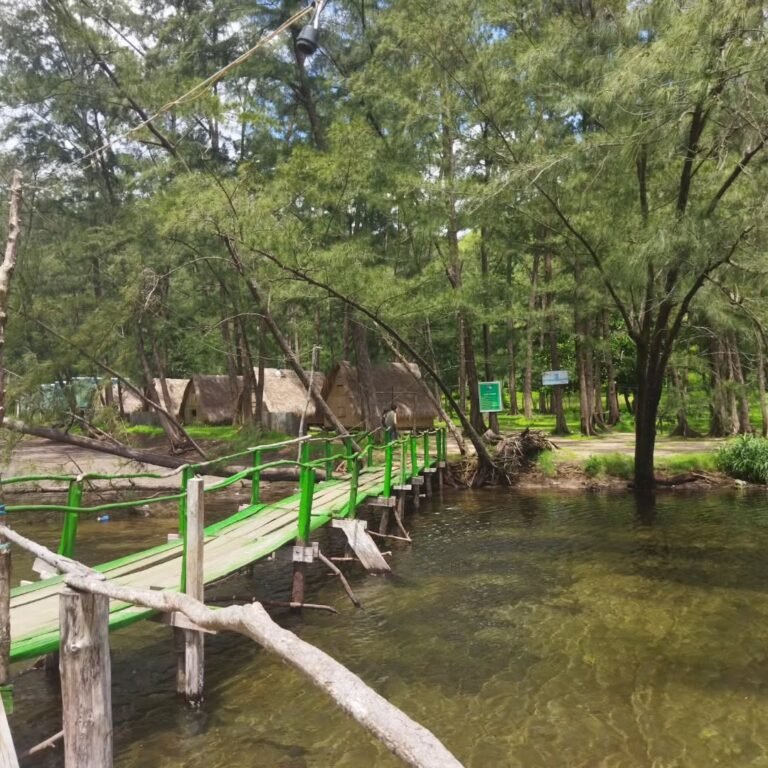
Things to Do & Activities at Anawangin Cove
Anawangin Cove isn’t just a place to lounge on the sand—it’s a paradise brimming with exciting outdoor activities suitable for every type of traveler. From leisurely beach strolls to exhilarating hikes, there’s always something to captivate visitors at Anawangin Cove Zambales.
Anawangin Cove Island Hopping (Nagsasa Cove, Capones, Camara Island)
One of the highlights of visiting Anawangin Cove is island hopping, allowing tourists to explore nearby scenic islands like Nagsasa Cove, Capones Island, and Camara Island.
Nagsasa Cove: Slightly more remote and less crowded, Nagsasa Cove shares similar landscapes with Anawangin Beach, characterized by volcanic ash, lush pine-like agoho trees, and crystal-clear waters.
Capones Island: Famous for its historical lighthouse offering panoramic ocean views—perfect for photography enthusiasts.
Camara Island: Known for unique rock formations and snorkeling spots abundant with marine life.
Pricing & Duration:
Island hopping tours typically range from PHP 1,500 to PHP 2,500 per boat, good for groups of 4-6 persons. Tours generally last 4-6 hours, allowing enough time to explore and enjoy each island.
Swimming and Beach Activities at Anawangin Beach
Swimming is undoubtedly a must-do activity at Anawangin Beach. The cove’s gentle waters are suitable for families and casual swimmers alike. Visitors frequently enjoy:
Kayaking and paddleboarding (available for rent from local boat operators).
Volleyball, frisbee, and other beach games.
Relaxing strolls along the beach at sunset.
It is advisable to always practice safety by swimming within the designated areas, as some deeper sections may pose risks, especially for inexperienced swimmers.
Camping Experience at Anawangin Island
One of the unforgettable highlights at Anawangin Island is camping under the stars, offering visitors an authentic and immersive experience away from modern distractions.
Campfire Activities: Gather around a campfire for storytelling, singing songs, or simply enjoying the sound of crackling wood with the ocean as your backdrop.
Stargazing: Due to minimal light pollution, Anawangin provides excellent conditions for observing constellations, making it perfect for astronomy lovers.
Group Camping: Ideal for friends, families, or even corporate team-building, offering an excellent bonding experience.
Visitors should bring tents, sleeping bags, cooking essentials, and extra snacks. For convenience, camping equipment rentals are sometimes available in Barangay Pundaquit.
Exploring the Anawangin Cove Hiking Trail
For travelers seeking adventure, the Anawangin Cove hiking trail offers scenic trekking routes leading through picturesque mountains and forests.
Trail Difficulty & Duration: The main trail from Pundaquit to Anawangin takes approximately 4-6 hours. Moderate in difficulty, it’s best suited for those with a basic fitness level.
Scenic Viewpoints: The trek rewards hikers with sweeping views of the surrounding hills, beaches, and the stunning expanse of the West Philippine Sea. Many visitors prefer hiking early in the morning to avoid midday heat.
Travelers should bring sufficient water, sunscreen, hats, and comfortable hiking shoes to ensure a safe and enjoyable trek.
Photography Spots and Recommended Moments
Photography enthusiasts will find endless inspiration around Anawangin Cove. Some highly recommended spots and moments include:
Sunrise and sunset at Anawangin Beach, capturing the vibrant hues reflected on the tranquil waters.
Panoramic viewpoints along the hiking trail, offering a breathtaking perspective of the cove below.
Capones Island Lighthouse, for historical and architectural photography.
Visitors are encouraged to bring cameras and tripods to fully capture these memorable scenes.
Bird Watching and Wildlife Sightings
With its rich biodiversity, Anawangin Zambales is ideal for wildlife enthusiasts and bird watchers. Native bird species and other small wildlife often roam freely, making early morning strolls particularly rewarding. Visitors should carry binoculars and approach wildlife quietly to enhance the experience.
Tips for Families, Couples, and Solo Travelers
To maximize enjoyment at Anawangin Cove, travelers may consider the following:
Families: Opt for a well-planned itinerary, prioritizing safety and convenience. Rent larger tents, carry sufficient snacks, and ensure young children have life jackets during boat rides.
Couples: Choose off-peak dates for a romantic, tranquil experience. Prepare a special dinner by the beach, or enjoy stargazing together.
Solo Travelers: Join group tours for island hopping to meet other visitors, ensure personal safety, and reduce overall expenses.
No matter the travel style, careful planning and flexibility will ensure visitors enjoy everything Anawangin Cove has to offer, creating memories lasting long after the sand is brushed from their feet.
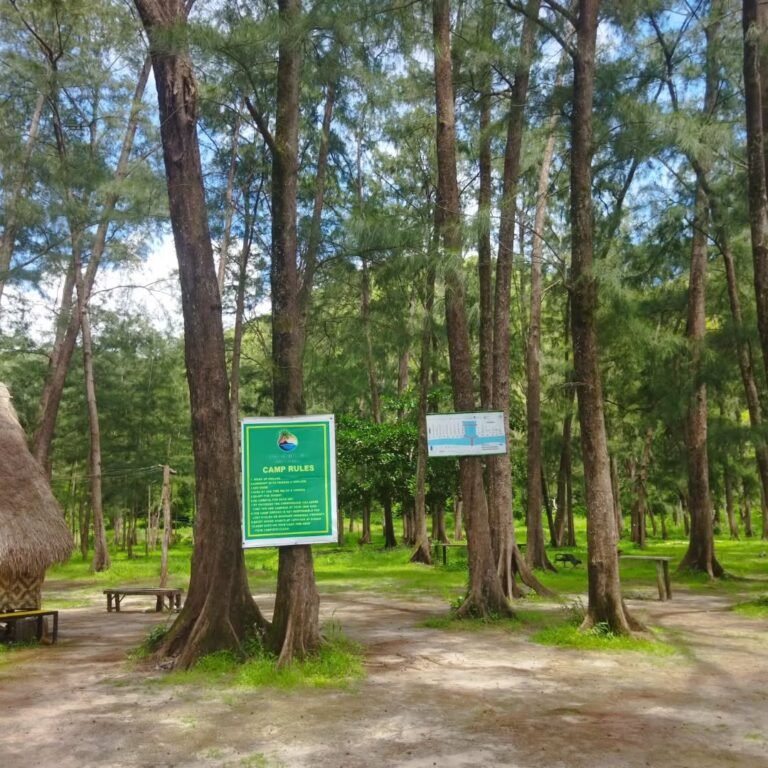
Accommodations & Facilities at Anawangin Cove
Overview of Anawangin Cove Accommodation Options
Visitors planning to stay overnight at Anawangin Cove should know that the area remains beautifully untouched, prioritizing nature over development. Unlike traditional tourist destinations, there are no luxurious hotels or elaborate resorts directly within the cove itself. Instead, accommodations at Anawangin Beach primarily revolve around rustic camping experiences, making it perfect for those seeking an authentic, nature-immersed getaway.
Camping at Anawangin Beach
Camping is the primary and most popular accommodation choice at Anawangin Cove. Tourists have the flexibility to either bring their own camping equipment or rent tents from local operators.
Tent Rentals and Own Equipment:
Tent rentals are conveniently available at Barangay Pundaquit, with rates typically ranging from PHP 300 to PHP 500 per tent, per night, depending on tent size. Visitors bringing their own gear will find designated camping spots near the beach or within shaded areas beneath the Agoho trees.Campground Experience:
The camping area at Anawangin Beach provides a communal atmosphere, ideal for mingling and making new friends around evening campfires. Travelers are encouraged to bring portable cooking equipment, food supplies, and basic camping essentials to ensure comfort during their stay.
Availability of Facilities at Anawangin Cove
While facilities at Anawangin Cove Zambales are basic, they cover the essentials needed for a comfortable outdoor experience:
Restrooms and Showers:
Basic toilet and shower facilities are available; however, visitors should set expectations appropriately—these amenities are simple and practical rather than luxurious. Tourists should also prepare their own toiletries and sanitation supplies.Cooking Areas and Supplies:
Communal cooking areas are present, though visitors are encouraged to bring their portable cooking equipment, utensils, and enough fresh drinking water and food for the duration of their stay. Small stores selling basic supplies are occasionally available, but stocks are limited and can be pricier than usual.
Nearby Anawangin Zambales Beach Resort Options
Travelers seeking more comfort than camping offers might opt to stay at nearby Anawangin Zambales beach resort options. These resorts are mostly located in Pundaquit, just a short boat ride away from the cove:
Canoe Beach Resort:
Offers comfortable, air-conditioned rooms, family cottages, and swimming pools. Guests often appreciate its beachfront access and friendly staff.
Room rates: PHP 2,500 – PHP 5,000 per night.Pundaquit Luxury Resort:
Known for its serene ambiance and beachfront villas, this resort is ideal for couples and families. Facilities include an in-house restaurant, pool, and organized island hopping tours.
Room rates: PHP 3,000 – PHP 6,500 per night.Wild Rose Beach Inn:
A budget-friendly option with basic rooms and homey amenities, appealing especially to backpackers and budget travelers. It also has convenient access to boats going directly to Anawangin Cove.
Room rates: PHP 1,500 – PHP 2,800 per night.
Recommendations Based on Budget, Comfort, and Travel Style
When planning accommodations near Anawangin Cove, travelers should consider:
Budget Travelers and Solo Backpackers:
Camping directly at Anawangin is highly recommended. This offers affordability and an unmatched natural experience.Families and Groups:
Staying at nearby resorts like Canoe Beach Resort or Pundaquit Luxury Resort provides more comfort and convenience, including air-conditioned rooms and accessible amenities ideal for family trips.Couples Seeking Romantic Getaways:
Resorts like Pundaquit Luxury Resort offer intimate beachfront villas and scenic surroundings, perfect for romantic weekends or celebrations.
Overall, choosing the right accommodation depends greatly on visitors’ comfort preferences, adventure level, and budget considerations. Whether camping under the stars at Anawangin Beach or enjoying comfort at a nearby resort, visitors can find the perfect balance for their Zambales vacation.
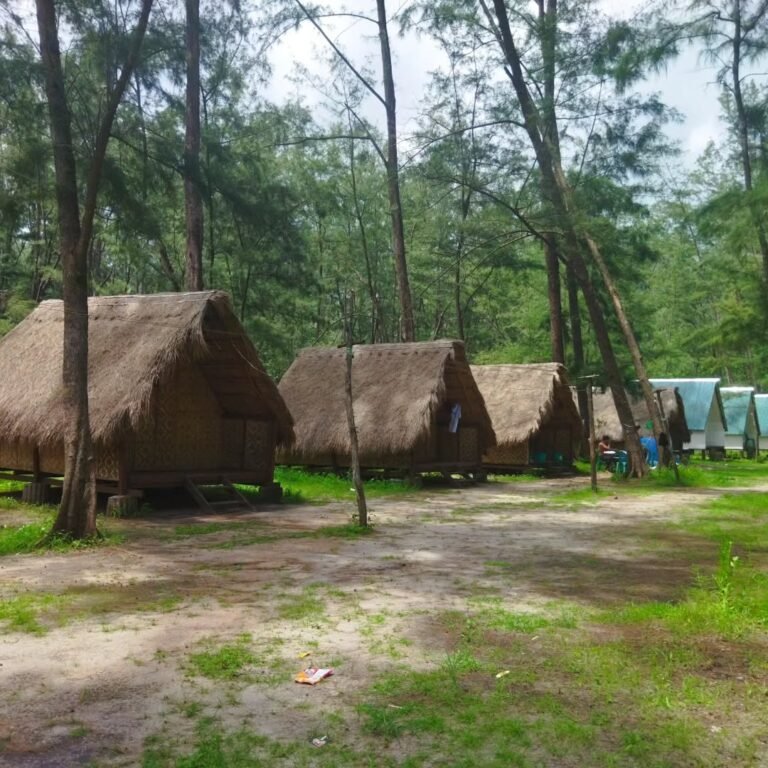
Entrance Fees & Costs at Anawangin Cove
Detailed Breakdown of Anawangin Cove Entrance Fee
Understanding the costs associated with visiting Anawangin Cove Zambales is crucial for planning a stress-free trip. The Anawangin Cove entrance fee varies slightly depending on the duration of stay and activities selected:
Day Tour Entrance Fee: PHP 50 to PHP 70 per person. Ideal for those spending a few hours exploring the pristine shores of Anawangin Beach.
Overnight Stay Entrance Fee: PHP 100 to PHP 130 per person. Overnight visitors gain access to camping areas, basic facilities, and the opportunity to experience sunset and sunrise at the cove.
Additional Fees (Environmental and Camping Fees)
In addition to the basic entrance fees, visitors should account for supplementary costs such as:
Environmental Fees: Typically included in the entrance fee but occasionally charged separately at around PHP 20 to PHP 50 per person. This fee contributes to maintaining the cleanliness and natural beauty of the cove.
Camping Fees: If visitors do not bring their camping equipment, tent rentals at Anawangin Beach generally cost around PHP 500 to PHP 650 per night, depending on the tent size.
Payment Process and Budgeting Tips
Payments for entrance fees and camping rentals are generally made directly upon arrival at Anawangin. Visitors are advised to carry sufficient cash, as credit card facilities are unavailable, and ATMs are scarce near the area.
Budgeting Recommendations:
Allocate at least PHP 500-800 per person for a comfortable day trip including boat transfers.
Budget PHP 1,000-1,500 per person for overnight stays, covering fees, camping equipment, meals, and boat transportation.
Bringing your own tent and food supplies significantly reduces overall expenses.

Sample Itinerary for Anawangin Cove
Day Trip Itinerary from Manila
4:00 AM: Depart Manila via private car or bus bound for San Antonio, Zambales.
7:30 AM: Arrival at Pundaquit; breakfast at local eateries.
8:00 AM: Boat ride from Pundaquit to Anawangin Cove (approximately 30-45 minutes).
9:00 AM – 12:00 PM: Swimming, beach activities, exploring the cove’s stunning landscape.
12:00 PM – 1:00 PM: Picnic lunch (pack meals or snacks brought from Manila).
1:00 PM – 3:00 PM: Leisure time, optional short hike on the Anawangin Cove hiking trail.
3:30 PM: Depart Anawangin; boat ride back to Pundaquit.
4:00 PM: Head back to Manila, arrival by approximately 8:00 PM.
2D1N Camping Itinerary at Anawangin Cove
Day 1:
6:00 AM: Leave Manila; arrive at Pundaquit around 10:00 AM.
10:30 AM: Boat transfer to Anawangin Beach, arrival around 11:15 AM.
12:00 PM: Set up camp; picnic lunch.
1:00 PM – 4:00 PM: Swimming, kayaking, or beach volleyball.
5:00 PM: Sunset photography and group dinner preparations.
7:00 PM onwards: Campfire, storytelling, stargazing.
Day 2:
5:30 AM: Wake up early for sunrise viewing and photography.
7:00 AM: Breakfast; short hike exploring scenic viewpoints.
10:00 AM: Pack up and return to Pundaquit; early lunch before heading back.
1:00 PM: Depart for Manila.
Weekend Trip Itinerary including Anawangin Cove Island Hopping
Friday:
Depart Manila late afternoon; overnight stay at nearby Anawangin Zambales beach resort options in Pundaquit.
Saturday:
7:00 AM: Breakfast, depart resort via boat to Anawangin Cove.
8:00 AM: Arrival, set up camp.
10:00 AM – 3:00 PM: Anawangin Cove island hopping, exploring Nagsasa Cove, Capones Island (visit lighthouse), and Camara Island.
4:00 PM: Return to Anawangin for relaxation and sunset viewing.
7:00 PM onwards: Dinner and campfire activities.
Sunday:
6:00 AM: Sunrise walk along the beach or bird watching.
8:00 AM: Breakfast; leisure time for swimming or hiking trails.
11:00 AM: Break camp and boat ride back to Pundaquit.
1:00 PM: Lunch in Pundaquit; souvenir shopping.
3:00 PM: Depart for Manila, arriving around 7:00 PM.
This itinerary balances relaxation, adventure, and practicality, offering visitors the flexibility to tailor their visit to personal preferences while enjoying all the charms that Anawangin Cove has to offer.

Travel Tips & Practical Information
To ensure a memorable and stress-free visit to Anawangin Cove, travelers should come prepared. Here are some essential tips and practical information to help plan the trip effectively:
Essential Packing List Tailored for Anawangin Beach
Visitors should consider packing the following essentials to ensure comfort and convenience during their trip:
Camping gear: tent, sleeping bag, flashlight/headlamp, portable stove, cooking utensils
Clothing: swimwear, lightweight clothing, hat, sunglasses, comfortable footwear, extra clothes for cooler evenings
Sun protection: sunscreen, lip balm with SPF, after-sun lotion
Personal hygiene items: toiletries, towels, wet wipes, biodegradable soap
Miscellaneous: camera, power banks, waterproof bags, insect repellent, basic first-aid kit, garbage bags for trash
Safety Guidelines
Safety should always be a priority. Here are important guidelines to follow:
Boat Travel: Always wear life jackets during boat transfers. Check weather forecasts to avoid rough sea conditions.
Swimming: Swim in designated safe zones. Watch out for jellyfish or strong currents and never swim alone.
Hiking Trails: Stay on marked trails, hike in groups, and avoid trekking during harsh midday heat. Bring sufficient drinking water to avoid dehydration.
Responsible Travel Advice (Leave No Trace Principles)
Visitors should practice responsible tourism to preserve the natural beauty of Anawangin Cove Zambales:
Pack out all trash and dispose of it properly upon leaving.
Avoid disturbing wildlife or removing natural objects like rocks or shells.
Minimize noise, especially at night, to respect fellow campers and wildlife.
Use eco-friendly products to reduce environmental impact.
Food and Drinking Water Recommendations
There are limited food options in Anawangin, so bringing sufficient drinking water and ready-to-eat food is recommended.
Visitors planning longer stays should bring a portable cooler with ice to preserve perishable items.
Buying groceries in Manila or San Antonio beforehand is both cost-effective and convenient.
Communication & Connectivity Details
Travelers frequently ask, “Is there a signal in Anawangin Cove?” The answer is generally no. Mobile reception is extremely limited or non-existent, making Anawangin an ideal place to disconnect. Visitors should notify family and friends about their itinerary before departure.
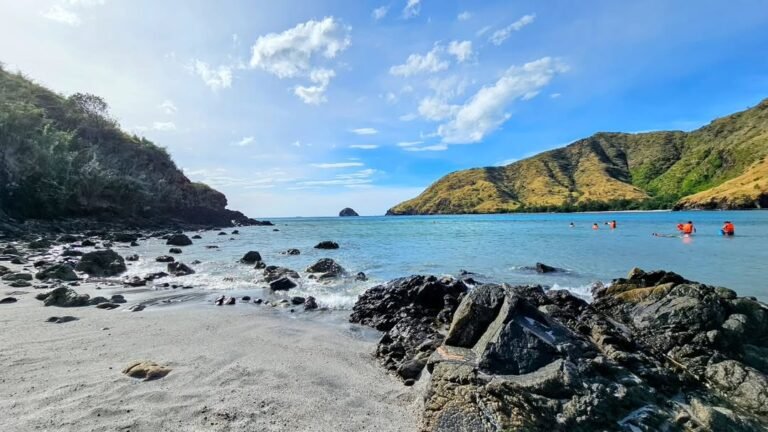
Frequently Asked Questions (FAQs)
How much is the entrance fee in Anawangin Cove?
The Anawangin Cove entrance fee ranges from PHP 50-70 for a day tour and PHP 100-130 for overnight visitors.
How much is the boat ride to Anawangin?
Boat rides typically cost around PHP 1,500-2,500 roundtrip, accommodating 4-6 passengers. Prices may vary depending on season and negotiations with boat operators.
Is there a signal in Anawangin Cove?
No, mobile signal in Anawangin Cove is very weak or entirely absent, providing visitors a genuine opportunity to disconnect and unwind.
Can visitors bring pets?
Generally, pets are allowed, provided they remain leashed and owners take responsibility for cleaning after them.
Is electricity available at Anawangin Cove?
Electricity is not available at the cove. Visitors should bring flashlights, power banks, or portable solar chargers for their devices.
Are there group discounts available?
Boat rentals may offer discounts for larger groups, but entrance fees typically remain fixed. Negotiating directly with boat operators can result in cost savings.
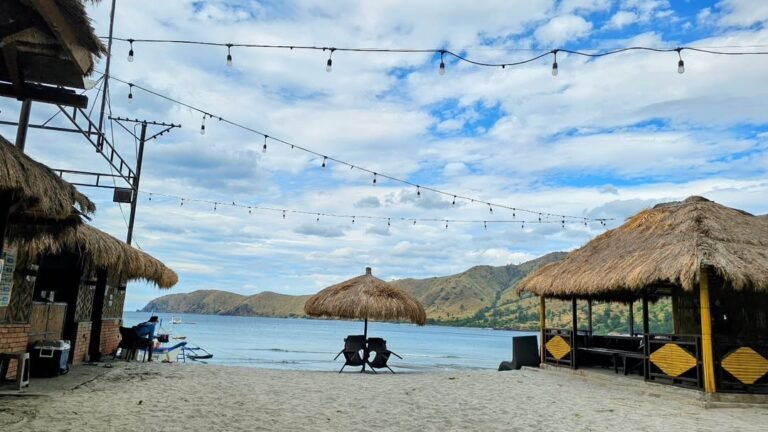
Conclusion & Call to Action
A visit to Anawangin Cove promises an extraordinary experience filled with adventure, tranquility, and unparalleled natural beauty. From camping beneath star-studded skies to exploring hidden islands such as Capones and Nagsasa, this secluded paradise is truly one of Zambales’ most enchanting treasures. Its unique volcanic ash shoreline, picturesque Anawangin Beach, lush forests, and spectacular mountain trails invite travelers to disconnect from daily stress and reconnect with nature.
Visitors are encouraged to plan their journey ahead to maximize enjoyment and minimize any potential challenges. Whether arriving as a solo adventurer, a family seeking relaxation, or a couple searching for a romantic getaway, Anawangin caters beautifully to all. Travelers can expect to return home refreshed, inspired, and undoubtedly eager to share stories of their unforgettable experiences.
We invite readers who’ve visited or those planning their trips to share their own experiences, ask questions, and join our community. Follow our social media pages or subscribe to receive more valuable travel insights and detailed guides to exploring the hidden wonders of the Philippines. Plan your visit now, and experience firsthand why Anawangin Cove Zambales consistently captivates those fortunate enough to discover its quiet charm.

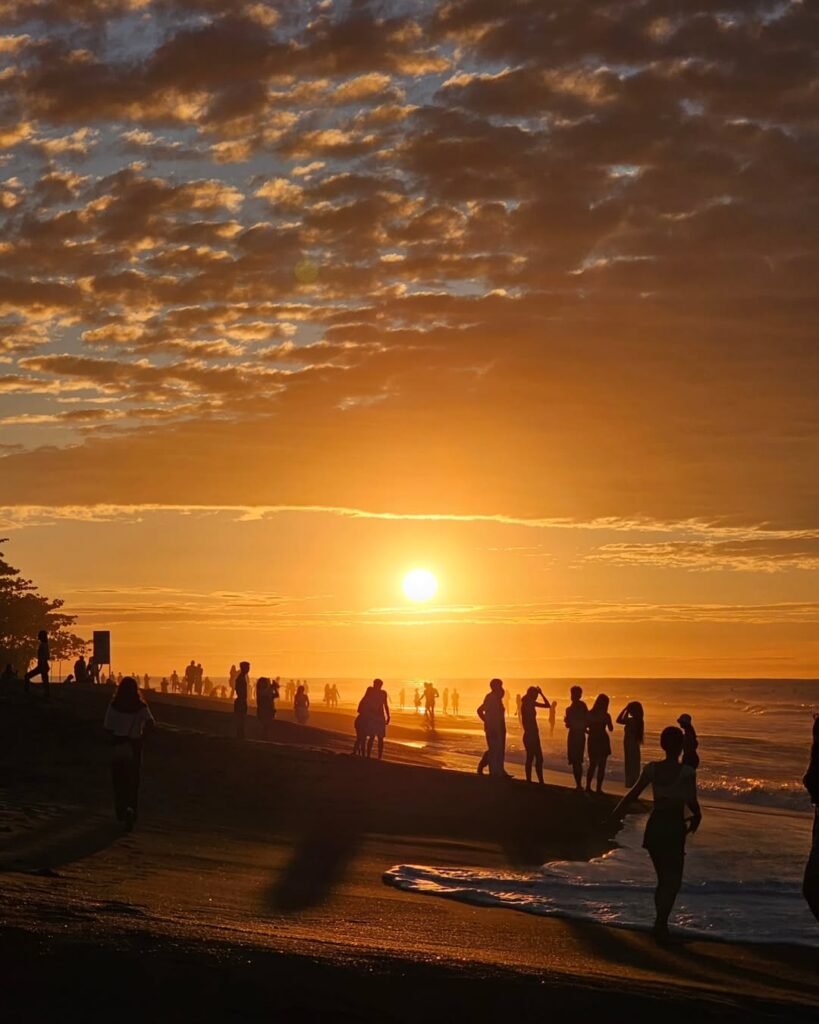
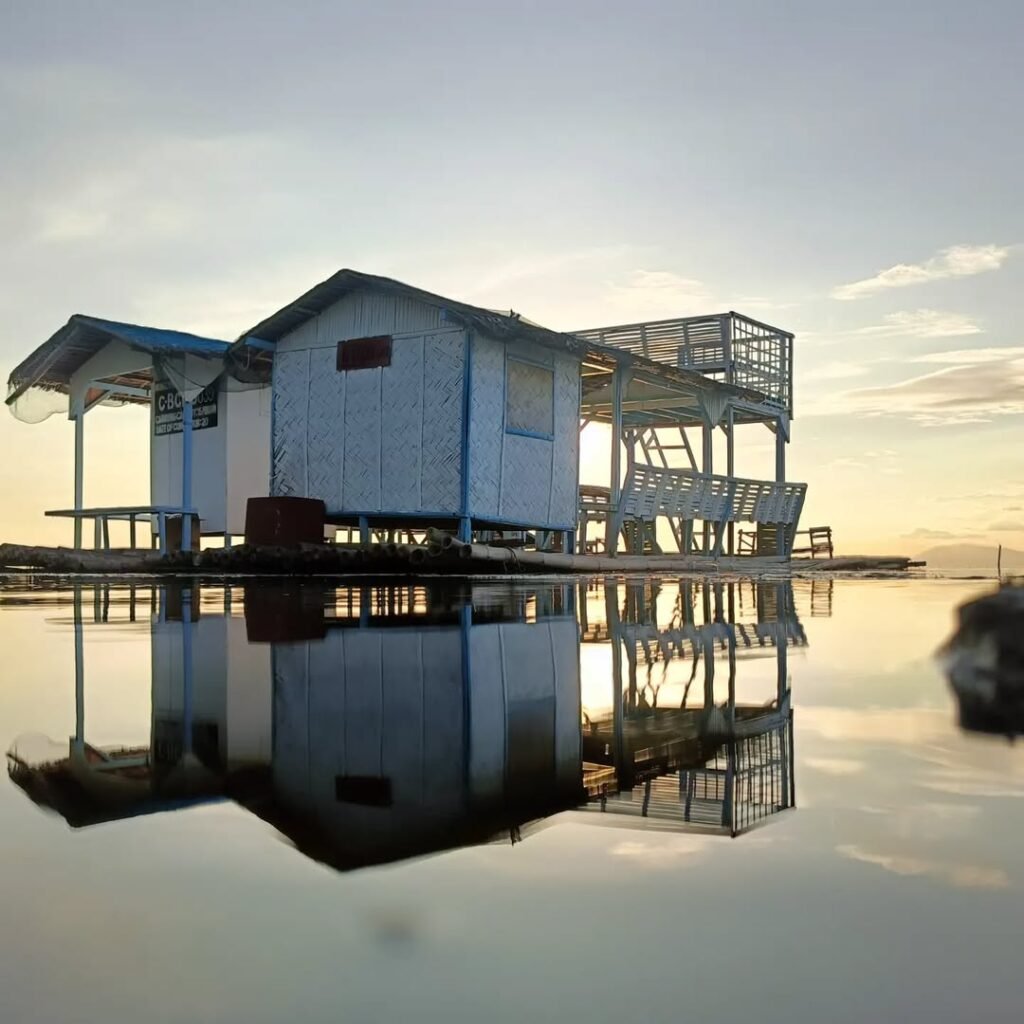
Hello, can I talk to someone regarding Anawagin tour?